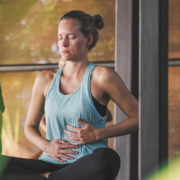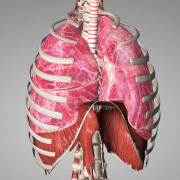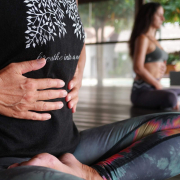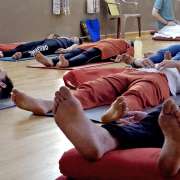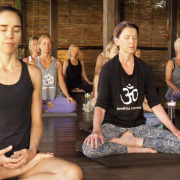 https://samahitaretreat.com/wp-content/uploads/2020/06/sala-sitting-2-scaled.jpg
1433
2560
Dr. Paul Dallaghan
http://samahitaretreat.com/wp-content/uploads/2024/01/samahita-logo-v2.svg
Dr. Paul Dallaghan2020-06-09 03:51:532023-11-02 05:29:42Non-behavioral approaches versus yogic self-awareness in pandemic stress
https://samahitaretreat.com/wp-content/uploads/2020/06/sala-sitting-2-scaled.jpg
1433
2560
Dr. Paul Dallaghan
http://samahitaretreat.com/wp-content/uploads/2024/01/samahita-logo-v2.svg
Dr. Paul Dallaghan2020-06-09 03:51:532023-11-02 05:29:42Non-behavioral approaches versus yogic self-awareness in pandemic stressInterview with Neuropsychologist Dr. Al Scopp
Neuropsychologist Dr. Al Scopp talks about his early years discovering yoga and being one of the first students to practice with Swami Satchidananda in New York, working at a pioneering neurology lab at Duke University in the 70’s and conducting some of the earliest experiments into biofeedback and meditation including testing Swami Satchidananda’s brainwaves and, more recently, conducts anti-ageing seminars for medical professionals.
Swami Satchidananda
Dr. Al Scopp discovered yoga in the 60’s initially trying to learn from books. Realising this was not a viable way to learn he attended a lecture by Swami Satchidananda in New York and subsequently took classes held at Satchidananda’s apartment. A few years later, as a PHD student at Duke university, he invited Satchidananda to the lab and fitted him up on a pioneering EEG device to measure his brainwaves. It turned out that Satchidananda’s brainwaves, immediately and with no preparation, displayed a high amplitude of alpha waves (calm, relaxed and attentive) and theta waves (associated with deep meditative states). Within a few minutes these readings switched to almost exclusively high amplitude theta waves in all areas of the brain. Much research has been conducted on experienced meditators since and this knowledge is considered standard but in those days it was pioneering work.
Dr Scopp’s work in biofeedback continued as a medical practitioner helping sufferers of headache and migraine. Using measurements of muscular tension in the face and jaw, temperature and Heart Rate Variability (HRV).
Biofeedback and Headaches
Dr. Scopp explains how biofeedback works and how it helps people suffering with headaches:
“When I got my PHD I started a medical clinic for treating migraine and other severe headaches, in Mountain View, Silicon Valley. There was various research showing how biofeedback helps with various kinds of headaches because you’re measuring with biofeedback some of the underlying physiology of headache. So by immediately showing someone how well they are doing on that measure they can learn to modify it in a favourable direction. So, this is easy to understand with ordinary tension muscle contraction headaches, which are not as severe as migraine (….) We can measure how tight the muscles are in the forehead and the jaw, find which muscles are worse and put the sensors there and covert the information about how tight it is through a display that a person easily understands such as a change in colour or music or volume so they are getting continuous feedback. That’s what makes for biofeedback, instant representation of an inner physiological process that enables control.”
Heart Rate Variability and breathing:
“There have been many kinds of biofeedback developed in the last 40-50 years. Hundreds of research studies applying it to headaches and other medical problems. Some of the recent ones are very helpful, one example – It has been found that when we’re calm our heart rate is not only slower but more importantly beats very regularly exactly in rhythm. And to the degree the heart beat is variable you are more internally stressed.” Studies have shown (1) that slower breathing improves heart rate variability and therefore a more calm relaxed state.
Simple dietary habits to increase life expectancy.
More recently Dr. Scopp has been giving lectures on pathways of ageing and strategies to prevent ageing and gives this simple dietary advice:
“There are ordinary things one can do that greatly lower the risk of major neurological diseases (such as Parkinson’s and Alzheimer’s) cancers and heart disease just by changes in diet like eating more dark chocolate, drinking 3-5 cups of coffee per day, eating at least 2 pounds (1 kg) of broccoli per month (for reducing cancer), pomegranates for reducing plaque deposits in the arteries.”
Watch the full video to hear Dr. Scopp’s story and learn more about biofeedback, curing headaches and improving longevity.
(1) The physiological effects of slow breathing in the healthy human
https://www.ncbi.nlm.nih.gov/pmc/articles/PMC5709795/
Inhalation/Exhalation Ratio Modulates the Effect of Slow Breathing on Heart Rate Variability and Relaxation
https://link.springer.com/article/10.1007/s10484-014-9253-x
More from the Samahita Blog
